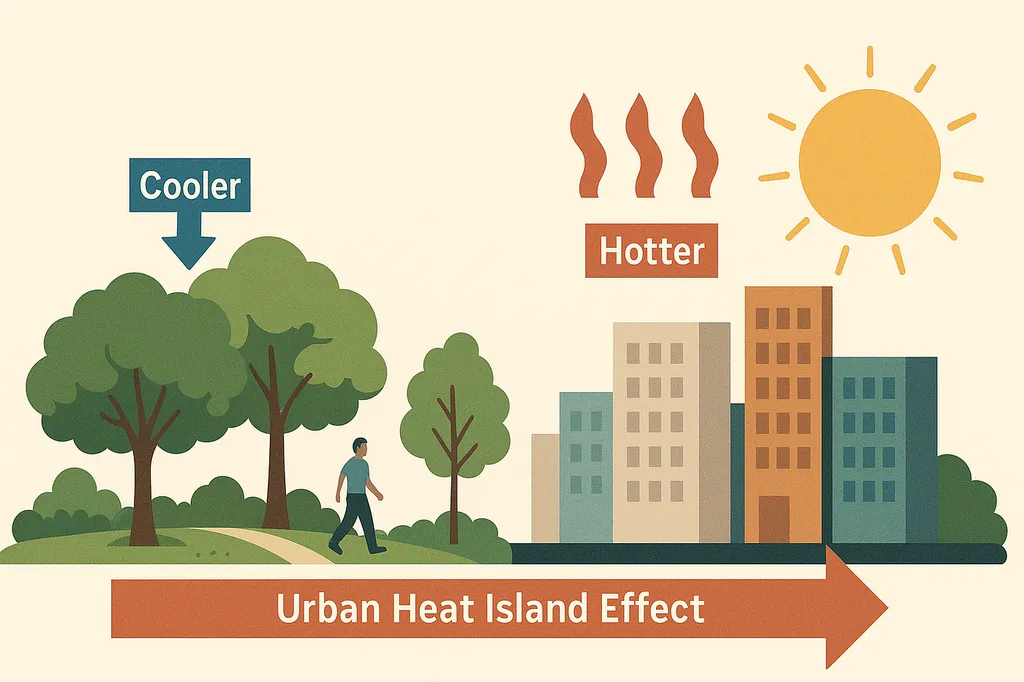In the heart of Naples, Italy, a groundbreaking study is shedding light on the crucial role urban green spaces play in combating the Urban Heat Island (UHI) effect. Published in *All Earth*, the research led by Davide Morale from the Department of Science and Technology at Parthenope University of Naples, integrates advanced satellite imagery and geographic information systems (GIS) to offer a nuanced understanding of how urban vegetation can mitigate land surface temperatures.
Using Landsat-9 thermal imagery and GIS tools, Morale and his team analyzed the spatial variation of Land Surface Temperature (LST) across Naples. The study employed two complementary approaches: Local Climate Zones (LCZs) to assess the influence of urban morphology on LST, and Corine Land Cover (CLC) data to evaluate thermal gradients around four urban areas using concentric buffers at 500, 1000, and 1500 meters.
The findings are compelling. Significant cooling effects were observed in proximity to urban green areas, with maximum LST differences of +8.5°C in industrial or commercial units. More moderate gradients were noted in agricultural and semi-natural areas. “The LCZ-based analysis confirmed significant differences in LST between the different zones, with built-up areas warmer than vegetated areas,” Morale explained. This research not only highlights the cooling benefits of urban greenery but also provides a replicable methodology for other cities grappling with UHI effects.
For the agriculture sector, the implications are substantial. Urban green spaces, including parks, gardens, and agricultural lands within city limits, act as natural coolants, reducing the need for energy-intensive cooling solutions. This can lead to significant cost savings and environmental benefits. “By integrating green spaces into urban planning, cities can create more sustainable and resilient environments,” Morale added.
The study’s innovative approach combines LCZ analysis and CLC-based thermal gradient assessment, offering valuable insights for UHI mitigation strategies in Mediterranean cities. As urbanization continues to rise, the need for effective heat mitigation strategies becomes increasingly critical. This research provides a blueprint for future developments, emphasizing the importance of urban green vegetation in creating cooler, more livable cities.
In an era where climate change is exacerbating urban heat challenges, this study serves as a beacon of hope. By leveraging advanced technologies and data-driven approaches, cities can take proactive steps to mitigate the UHI effect and create healthier, more sustainable urban environments. The findings from Naples could very well shape the future of urban planning and agriculture, paving the way for a cooler, greener tomorrow.

